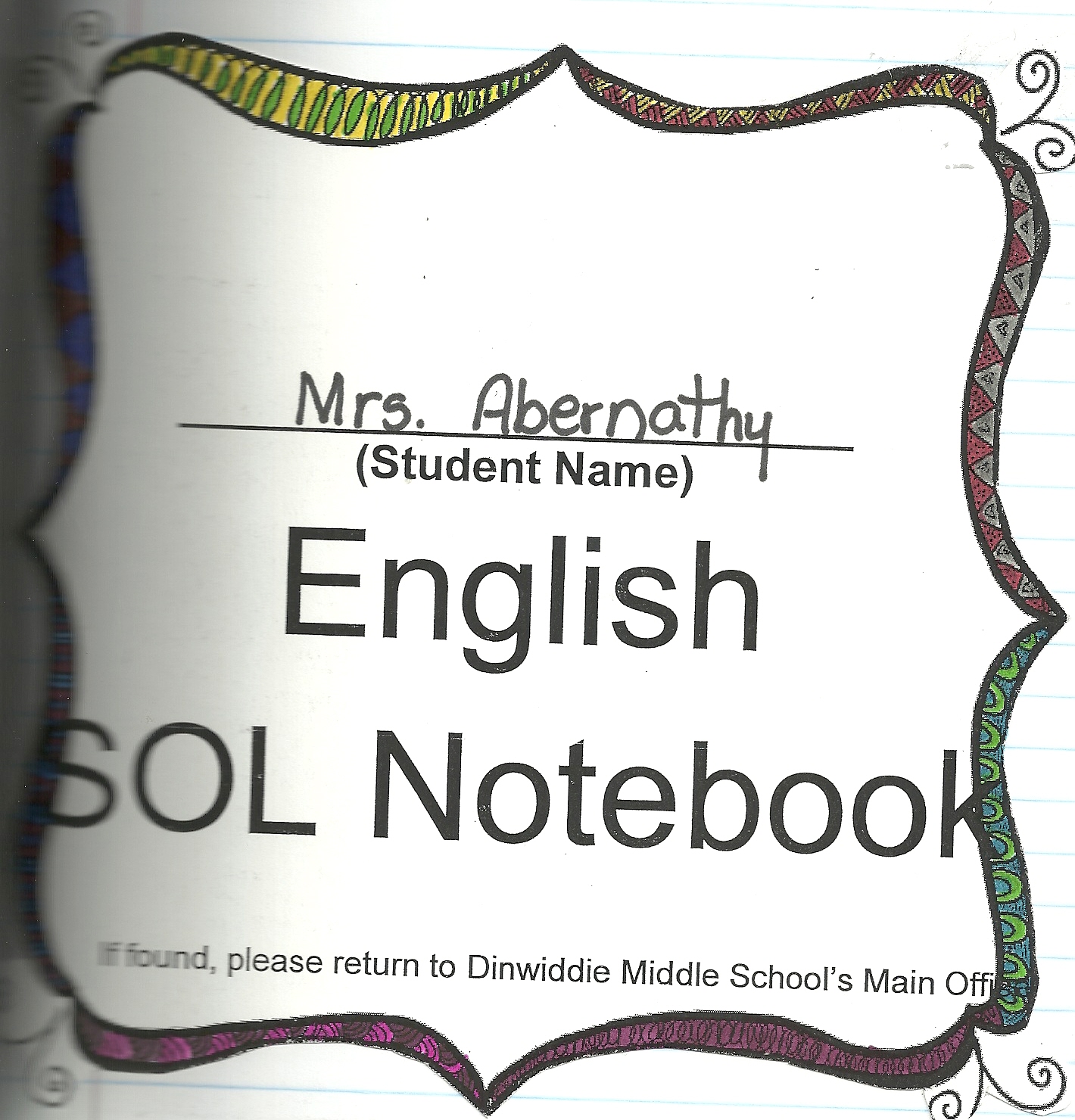Interactive Notebook
Students should be using a marble composition book with 100 sheets.

Beside the topic are the page numbers that it should be on in the Interactive Notebook.
| Parts of Speech - p. 1 | Rules for Capitalization - p. 2 | Rules for Commas - p. 3 | Rules for Apostrophes - p. 4 | |
| Rules for Quotation Marks - p. 5 | Rules for Numbers - p. 6 | Rules for Plural Nouns - p. 7 | Rules for Commonly Confused Words - p. 8 | Dead Verbs p. 9 |
| Dead Words - p. 10 | Four Types of Sentences p. 11 & 12 | Subject and Predicate p. 13 - 15 | Compound Subjects & Compound Predicates p. 16 | Simple & Compound Sentences p. 17 |
| Independent and Dependent Clauses - p. 18 & 19 | Sentences, Fragments, and Run Ons - p. 20 | Common and Proper Nouns p. 21 | Concrete and Abstract Nouns p. 22 | Plural Nouns - p. 23 |
| Possessive Nouns - p. 24 | Action, Linking, and Helping Verbs - p. 25 | Predicate Nominatives and Predicate Adjectives - p. 26 | Tense Fences - p. 27 & 28 | Principal Parts of Verbs - p. 29 |
| Infinitives & Participles (Principle Pats) - p. 30 & 31 | Direct & Indirect Objects - p. 32 | Prepositions - p. 33 & 34 | Prepositional Phrases - p. 35 | Pronouns - p. 36 |
| Identifying Pronouns - p. 37 | Kinds of Adjectives - p. 38 | Degrees of Comparison - p. 39 | Adverbs - p. 40 - 41 | Double Negatives - p. 41 |
| Coordinating & Correlative Conjunctions - p. 42 | Interjections - p. 43 | Transition Words - p. 44 & 45 | ACE Reading Strategy p. 46 | Text Features Toolbox - p. 46 |
| Ask 3 & 5 W & H - p. 47 & 48 | Author's Purpose p. 49 & 50 | Making Inferences - p. 51 | Nonfiction Text Features - p. 52 | Main Idea and Supporting Details: Understanding the Terms - p. 53 |
| Main Idea and Supporting Details: Organizing and Outlining - p. 54 | Expository Paragraph Structure - p. 55 & 56 | Nonfiction Text Structure (Overview) - p. 57 | Description (Nonfiction Text Features) - p. 58 | Descriptive Paragraphs - p. 59 |
| Compare & Contrast (Nonfiction Text Features) - p. 60 | Compare & Contrast - p. 61 | Order & Sequence (Nonfiction Text Features) - p. 62 | Sequence Paragraphs (Chronological) - p. 63 | Problem & Solution (Nonfiction Text Structure) - p. 64 |
| Problem & Solution - p. 65 | Cause & Effect (Nonfiction Text Features) - p. 66 | Cause & Effect - p. 67 | Persuasion Techniques - p. 68 | Opinion/Argumentative - p. 69 |
| Narrative Writing Activities 1 -3 - p. 70-72 | 5 Story Elements Lyrics - p. 73 - 74 | Story Vocabulary - p. p. 75 | Elements of Plot & Pyramid Activities 1 - p. 76 | Character Traits - p. 77 |
| Characterization - p. 78 - 80 | Types of Characters - p. 81 | Four Types of Conflict - p. 82 - 83 | Internal & External Conflict - p. 84 -85 | Theme Notes & Examples - p. 86 - 87 |
| Point of View - p. 88 | Mood & Tone - p. 89 | Folktales - p. 90 | Literal vs. Figurative Language - p. 91 | Figurative Language Review - p. 92 |
| Similes & Metaphor Kids - p. 93 | Simile & Metaphor Examples - p. 94 | Hyperbole Kid - p. 95 | Personification Kid - p. 96 | Hyperbole & Personification Examples - p. 97 |
| Idiom Examples - p. 98 | Alliteration Example - p. 99 | Allusion Example - p. 100 | Onomatopoeia Example - p. 101 | Mastering Figurative Language - p. 102 |
| Poetry & Prose - p. 103 | Sound Devices - p. 104 & 105 | Rhymes - p. 106 & 107 | Rhyme Scheme - p. 108 | Structure in Poetry - p. 109 |
| Types of Poetry - p. 110 | Sonnet - p. 111 & 112 | Limericks - p. 113- 115 | Free Verse - p. 116 - 117 | Haiku - p. 118 - 119 |
| Primary & Secondary Sources - p. 121 | Root Words - p. 125 | Prefixes - 157 | Suffixes - p. 171 |